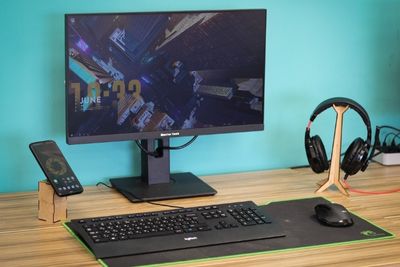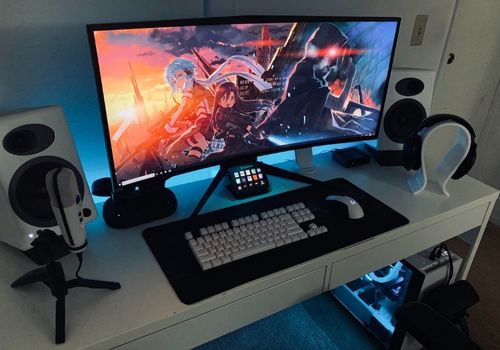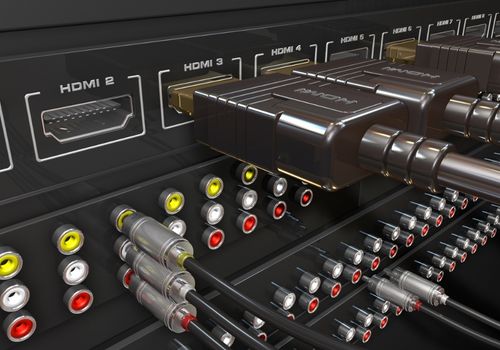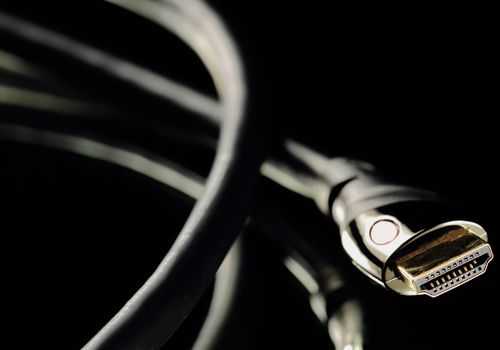
If you're wondering whether HDMI supports 144Hz, the answer depends on the HDMI version you're on and the resolution you're displaying at. However, if you have at least an HDMI 1.3 port on your device, it will be able to support a 144Hz refresh rate at 1080p resolution. With HDMI 2.0, this can go as high as 1440p at 144Hz.
As a long-time gamer, I've always been chasing the highest graphical fidelity, whether it's through the best graphics card or the best monitor. Some years ago, when I ended up with a 144Hz monitor, a top-of-the-line GPU, and a mobo with an older HDMI version, I was forced to figure out whether an HDMI port has the bandwidth for a 144Hz refresh rate.
I learned a lot, and I'm here to put all of that into this guide for you to learn from. Let's get right into the meat of the matter.
Contents
If you have monitors that support 144Hz refresh rate, you need to connect them over an interface that has high enough data rate capabilities to support that refresh rate.
DisplayPort and Dual-Link DVI do, but does HDMI support 144Hz?
Well, the answer depends on the version of the HDMI interface that you have. You will need to have an HDMI port and HDMI cable that support at least HDMI 1.3 before you get bandwidth high enough to support 144Hz refresh rate at 1080p.

HDMI stands for High-Definition Multimedia Interface. When it was first developed, it was made to support transmitting high-definition video and audio signals at a standard 60Hz.
As it was revised, the newer HDMI versions didn't stick to the same bandwidth. Instead, it continued to increase, allowing for higher resolutions and refresh rates.
Let's get into the major HDMI versions to date and outline how they've been able to improve video signal transmission.
Released in 2002, this was the very first HDMI version. This has a maximum video bandwidth of 3.96 Gbits/s, which allows it to handle a maximum resolution of 1920 x 1200 at a 60Hz refresh rate.
HDMI 1.2, which was released in 2005, still had the same limited bandwidth as 1.0 but added explicit support for formats like 1280 x 720 at both 100 and 120Hz refresh rates.
In 2006, HDMI 1.3 was released becoming the first version to support 144Hz due to boosting the video bandwidth of its HDMI connection to 8.16 Gbits/s.
This brought support for Full HD at a refresh rate of 144Hz. It even opened the floor to a much higher resolution - 2560 x 1440 - at a 75Hz refresh rate.
This also brought support for Mini HDMI cables and Mini HDMI ports.
The bandwidth of HDMI 1.4 stayed the same as the previous HDMI generation, at 8.16 Gbit/s. It was released in 2009.
HDMI 1.4 brought explicit support for a lot of different resolutions, going as high as 4096 x 2160, though only at 24Hz. It also brought explicit support for Full HD at 120Hz.
HDMI 1.4 also added some interesting features, like HDMI Ethernet Channel which allows two devices to share the internet over an HDMI connection. HDMI 1.4 also supports stereoscopic 3D formats, though the display panel will need to support this, of course.
Released in 2013, almost a decade after the first HDMI version, HDMI 2.0 was able to boost the maximum video data rate of the interface to an impressive 14.4 GBit/s.
HDMI 2.0 is also known as HDMI UHD, and it's no surprise as it is capable of transmitting high-resolution 4K video at up to 60Hz. It also brought support for the ultra-widescreen 21:9 aspect ratio.
The HDMI 2.0 revisions - 2.0a and 2.0b - added support for HDR content.
Launched in late 2017, HDMI 2.1 brought the video bandwidth of the standard to 42.0 Gbit/s, which is nearly triple the bandwidth of the previous generation. This is currently the latest HDMI version.
With HDMI 2.1, the Ultra High Speed category of HDMI cables had to be released to take full advantage of the data rates here.
There are many other key differences that HDMI 2.1 brought. This includes support for high-resolution video at a high refresh rate, such as 4K video at 120Hz and 8K at 60Hz. With Display Stream Compression, you can even get 8K at 120Hz and 10K at 100Hz.
In addition, it has brought Dynamic HDR and Variable Refresh Rate technology.

We know now that your HDMI port will support 144Hz 1080p video as long as you have at least HDMI 1.3.
However, there's another important aspect of the equation to consider, which is the HDMI cable that you use.
Can HDMI support 144Hz if you use any HDMI cable?
The answer is no. You have to use the right cable to get the best performance out of the different versions of HDMI.
Here's the thing though. You can use an HDMI cable with a mismatched version of HDMI since HDMI cables are both backward-compatible and forward-compatible. However, the component on a lower HDMI revision will limit your performance.
Let me explain in more detail. If you use an HDMI 1.4 cable with HDMI 1.0, you won't get the additional performance just because you're using a better HDMI cable. If you use the same cable with an HDMI 2.1 device, you won't be able to get the maximum video performance out of the device. You might also lose out on some of the additional features it has.
So, you should always attempt to get an HDMI cable that matches or surpasses the HDMI revision that your motherboard, graphics card, game console, or other device uses.
Gaming monitors tend to have the highest refresh rate among displays. If you want to support 144Hz PC or console gaming, your HDMI cable matters.
There are four major types of cable, so let's talk about them briefly.
This is the basic HDMI cable, and it effectively displays lower resolutions, like 720p content. It has a max data rate of 4.95 Gbit/s.
This is ideal for HDMI ports rated at version 1.2 or lower.
This type of cable pushes the data rate up to 10.2 Gbit/s. This means it can support 144Hz refresh rate for 1080p content, and even 4K though only at 30Hz.
You'll want this kind of cable if you're using either HDMI 1.3 or HDMI 1.4.
Also known as Premium High Speed, this kind of cable can handle bandwidth of up to 18 Gbit/s, which makes it the perfect choice for the many devices that run HDMI 2.0.
With this, 4K at 60Hz can be easily transmitted, even with HDR added to the mix.
Finally, there are Ultra High Speed cables that are perfectly compatible with HDMI 2.1 devices. They can handle bandwidth as high as 48 Gbit/s.
This means that they have enough bandwidth to handle high refresh rate content, even at 4K resolution. You'll also be able to reliably enjoy 8K at 60Hz.

HDMI supports 144Hz, as long as you're on an appropriate HDMI revision. HDMI 1.3 and above will reliably handle Full HD at a high refresh rate like 144Hz.
It is important to use the right cables for your HDMI devices. HDMI 1.4, for instance, will require a high-speed cable to get the most out of it. Premium cables are required if you want to get the best out of HDMI 2.0. Finally, for HDMI 2.1, you're absolutely going to need an Ultra High Speed cable.
